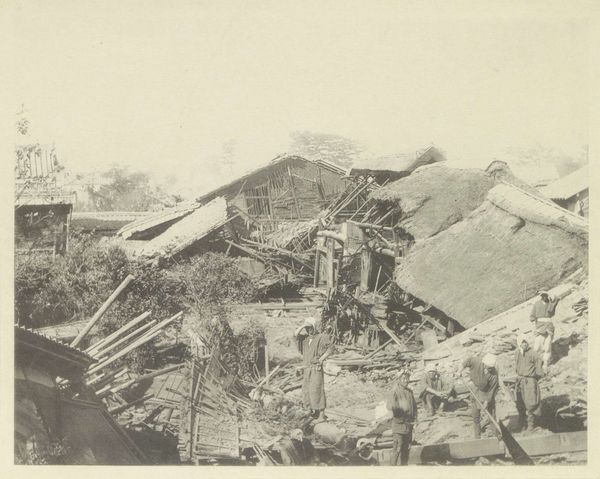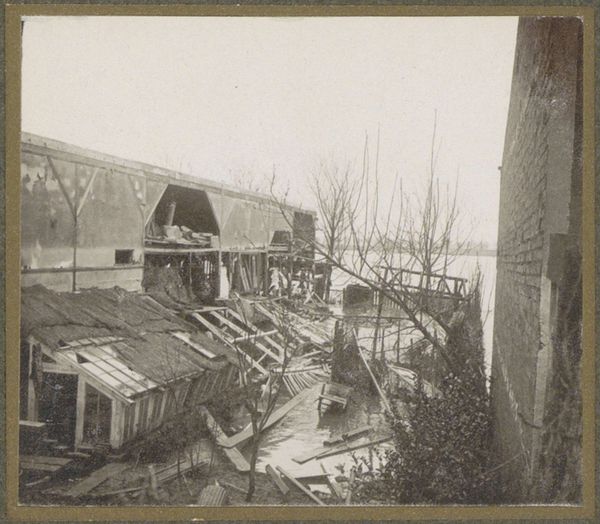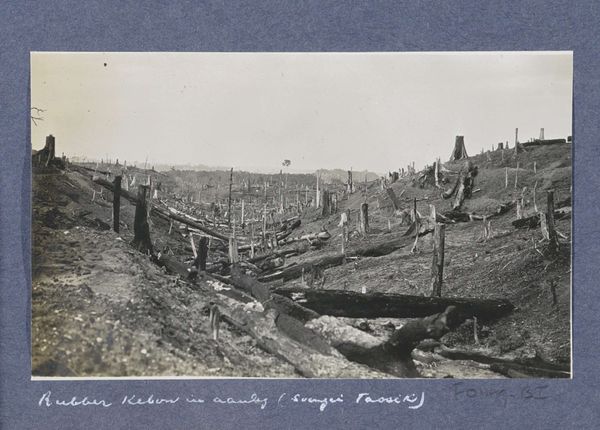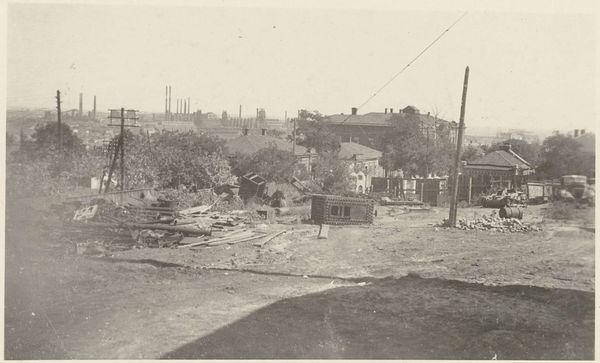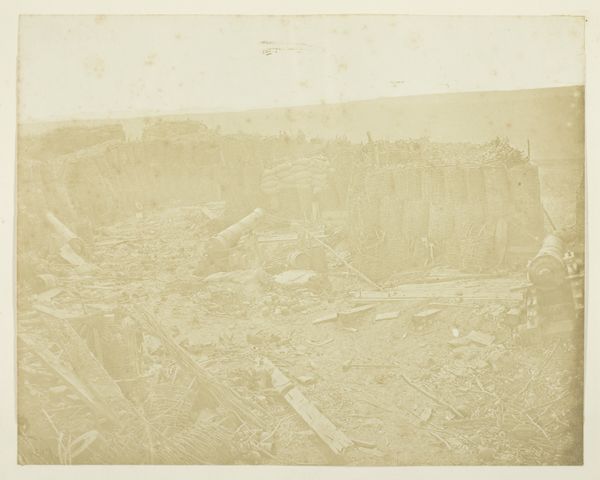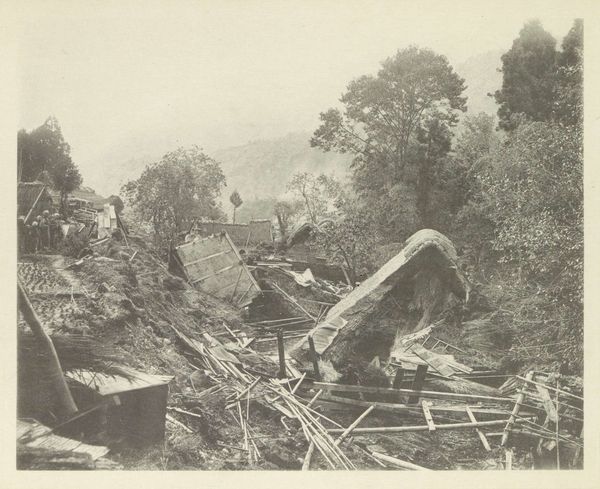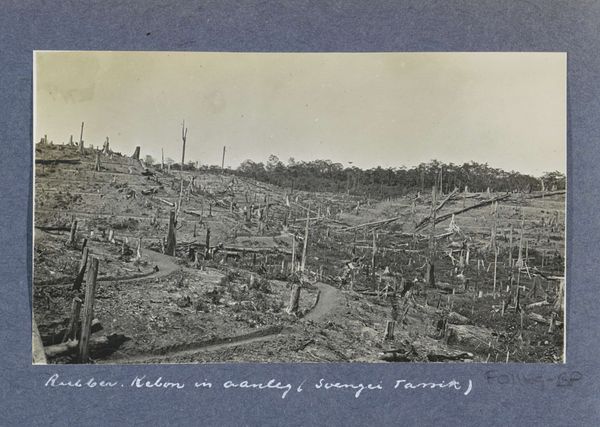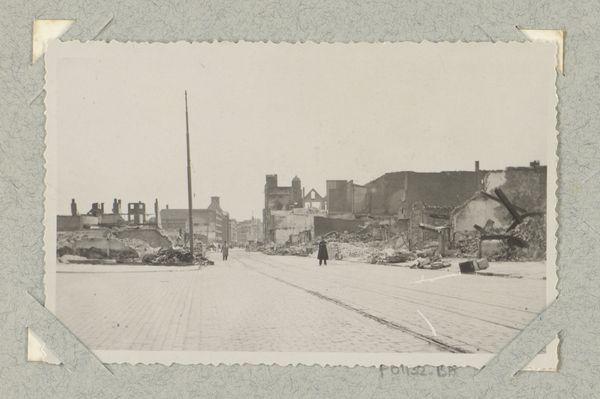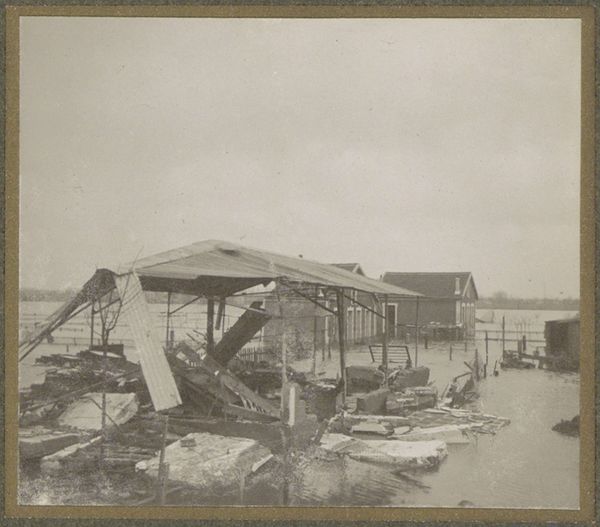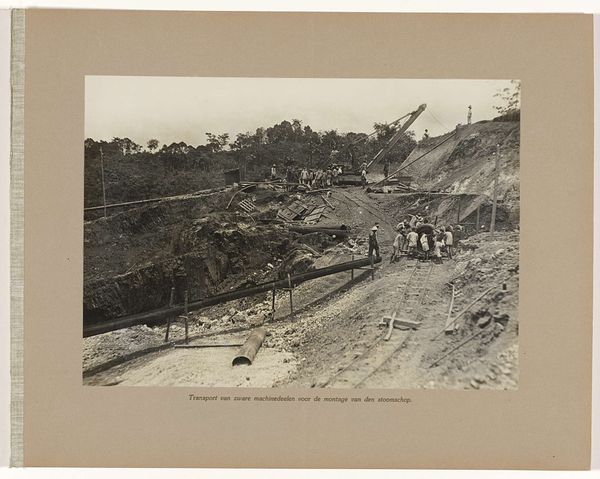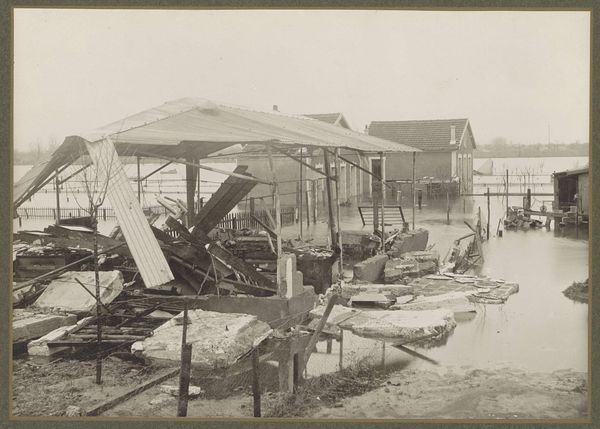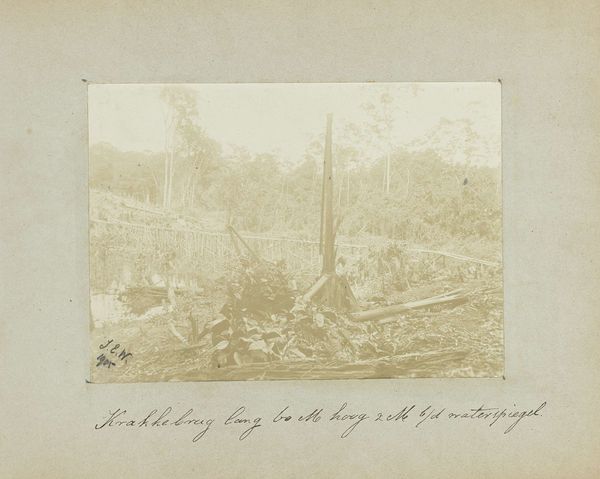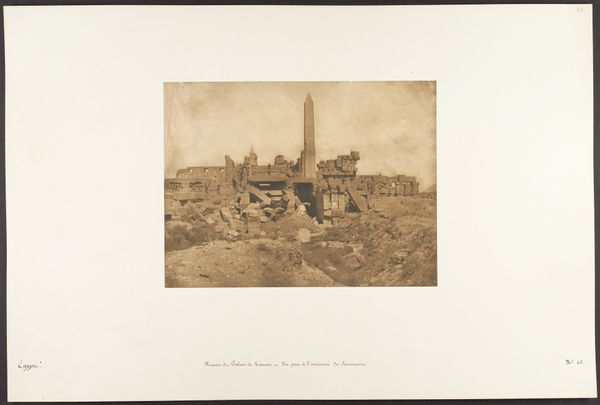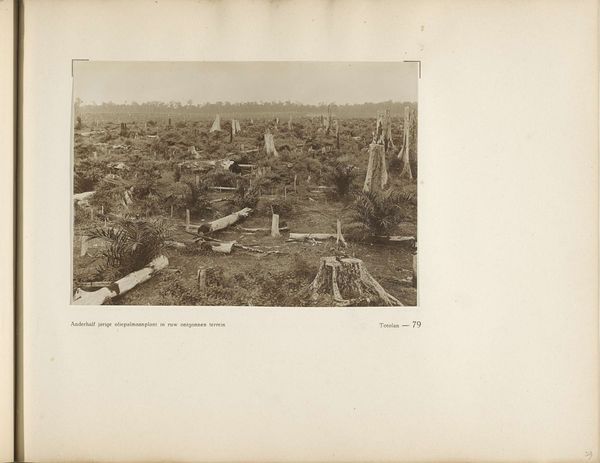
Kappen van oerbos voor de aanleg van een rubberplantage van de Deli Maatschappij bij Soengei Tassik op Sumatra c. 1900 - 1920
0:00
0:00
photography
#
landscape
#
photography
#
photojournalism
#
monochrome
Dimensions: height 79 mm, width 134 mm
Copyright: Rijks Museum: Open Domain
Curator: This powerful image, taken sometime between 1900 and 1920, is titled "Felling Primeval Forest for the Establishment of a Rubber Plantation of the Deli Company near Soengei Tassik on Sumatra." Editor: It's brutal. Even in monochrome, the devastation is palpable. The skeletal remains of the trees—like tombstones—speak of irreversible loss. I find the lack of color actually amplifies the somber mood. Curator: As a work of photojournalism, it certainly presents a stark depiction of landscape transformation. One can read this image as both a literal clearing of the forest, and a symbolic erasure. The "primeval" nature carries connotations of paradise and untouched origins now made vacant. Editor: Absolutely. There is an uncomfortable, violent relationship to this imagery of colonization. This land wasn't empty; lives and entire ecologies were forcibly displaced and exploited for profit. That phrase, "establishment of a rubber plantation," carries so much insidious weight. Curator: The photograph offers a limited view in several senses. On one hand, the limited visual information directs us to certain aspects: The felled trees form diagonal lines that dissect the composition, drawing the eye, and these fallen giants still appear magnificent even in destruction. The composition subtly hints at life beyond—and before. The remaining line of trees across the horizon could perhaps be read as resilient despite the invasion. Editor: It makes me consider ideas around "development" and "progress," concepts often presented uncritically. But here, progress is twinned with destruction. You know, photography can easily be complicit. Think of how colonial photography often erased indigenous presence to reinforce imperial narratives, a practice actively resisted in recent years. Who took this picture and what were their motivations? Curator: Without a known photographer, the symbolic intent becomes amplified, almost mythic. It captures a transitional moment, the tragic tipping point where one reality fades into another. The clearing has become a threshold, in essence. Editor: Threshold to environmental destruction and economic injustice. But the power of images like this lies in their capacity to generate reflection on our continued involvement in such exploitative relationships. Curator: The visual weight of historical narratives remains relevant today, forcing new understandings. Thanks for offering that contemporary framing. Editor: It makes you realize there’s nothing that remains neutral—so important to be thoughtful about what narratives we are amplifying in art and history.
Comments
No comments
Be the first to comment and join the conversation on the ultimate creative platform.
